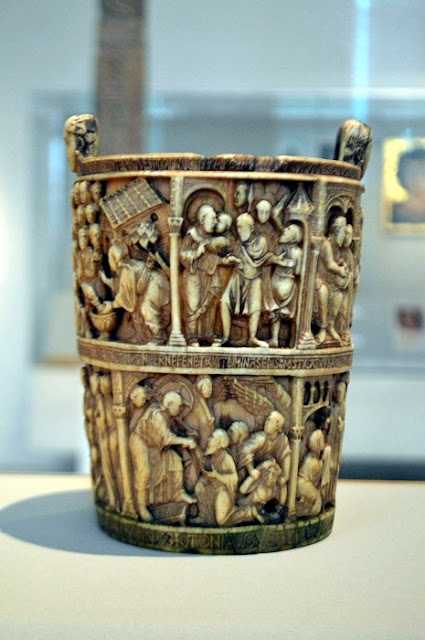The Basilewsky Situla
This little carved
ivory bucket (or situla) was intended as a holder for holy water and is thought
to have been carved around 980 or 981 AD in Milan and associated with the Holy Roman Emperor
Otto II's visit to the city. Situlae in ivory were particularly rare and only
three are known to survive. This example is particularly fine and is
decorated with twelve scenes from the Passion and Resurrection of Christ, in
two rows of six. The situla bears three rows of text: at the rim, the centre
line, and the basal edge. The upper two rows are lines from Coelius Sedulius'
Hexameter version of the New Testament, while the lowest line may be translated
as ‘May the Father who added thrice five to the years of Hezekiah, grant many
lustres to the august Otto. Reverently, Caesar, the anointing-vessel wishes to
be remembered for its art.’
The piece appears to
have passed into a private collection in 1856, before being sold and resold
several times – including to one Mr Basilewsky in 1874 after whom it is now
named. He, in turn sold it to Tsar Alexander III, which is how it ended up in
the Hermitage Museum in 1885. By the 1930s the museum found itself in financial
difficulties and put it up for sale. With generous support from the Art Fund,
the V&A bought it in 1933 for £7,900.
There are so many
wonderful things about this piece that I just adore, from the physical object
itself, to what it meant at the time of its manufacture, and even the
complicated tale of its life in various private collections. But, most of all,
I really do just love being able to use the words ‘situla’ and ‘situlae’ in
conversation – so much nicer than a plain old ‘bucket’!




Interesting piece, Robert. What a gorgeous object this is.
ReplyDelete